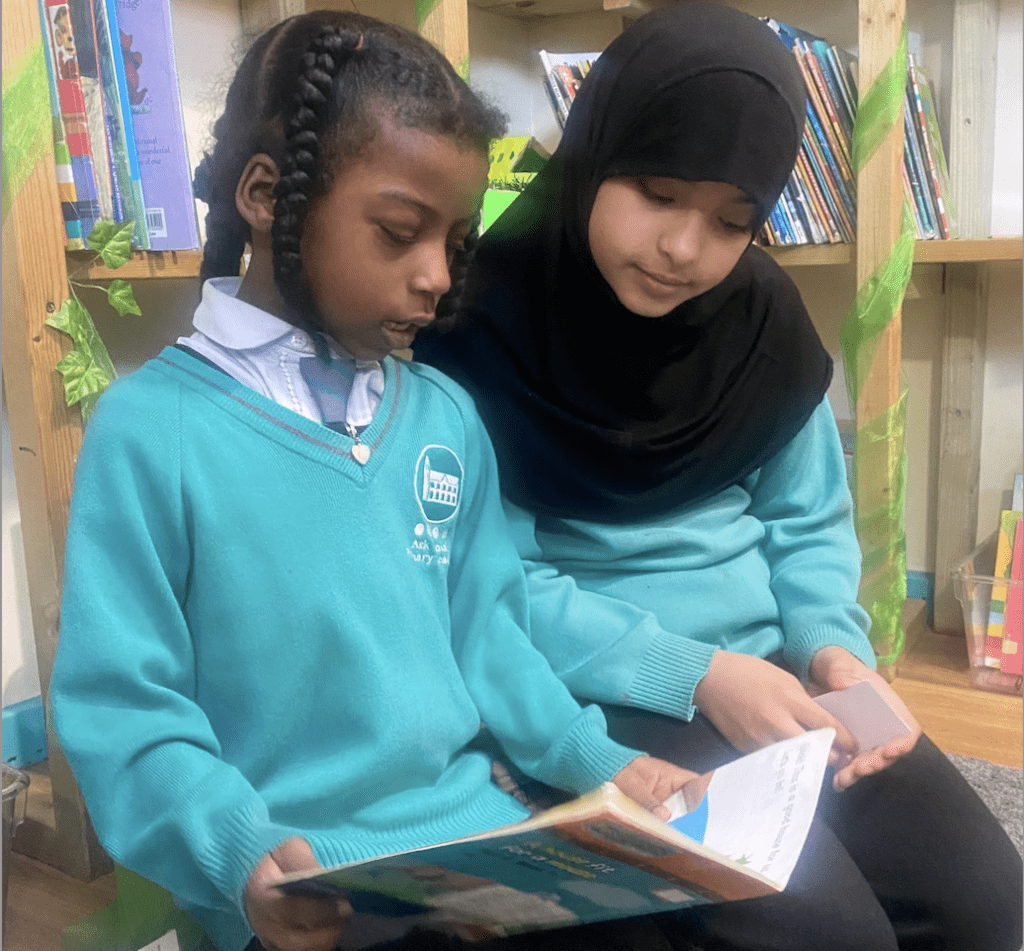Bang for our book
In building the best book corner, focus on the things that will make the biggest difference. Imagine you have a clean slate, an empty classroom. Let’s get bang for our book. Do the things that will truly make a difference and stop doing the things that will not. Every book that comes into our classrooms has got to be worth reading and everything we do to promote these books must have an impact on children.
Get the right books
Start by getting the right books. Maryanne Wolf says:
‘Emotional engagement is the tipping point between leaping into the reading life or remaining in a childhood bog where reading is endured only as a means to other ends.’1
So, choose the books that will engage children, both emotionally and intellectually, those that:
- elicit a response – anger, excitement, interest, curiosity
- have a strong narrative structure and intriguing illustrations
- extend vocabulary
- connect with something that children already know
You will also want to choose the best poetry, rhymes, as well as non-fiction, including topics from across the curriculum.
Let’s find books that help children establish their place in the world, books where all children – especially those from minority groups – get to be the main protagonist in a story, where they get to celebrate a birthday, go shopping, be poorly, have a tantrum, have their hair cut, worry about a new sibling, get to be the superhero, go camping, visit the seaside. The right books help children to find their voice. They break down a sense of otherness by reflecting the lives of people who are like them, and those who are different. This is vital in schools that have high numbers of children from minority groups, but is even more important in those that do not.
Let the books do the talking
The most important thing is that the books in each book corner are inviting, accessible and matched to the needs of the children in that class. It should be the words of the story and not the props of the book corner that transport children to different worlds: the mysterious forest, the dark and dripping cave, the moated castle. Well-chosen books should capture children’s imagination to such an extent that they are completely unaware of whether they are sitting on an ordinary classroom chair or a beanbag in the book corner.
The danger is, however, that teachers spend more of their time in decorating a book corner than in selecting, displaying and promoting the books. The term’s new book corner – the ‘castle’, the ‘underwater cave’, the ‘caravan’ – becomes rapidly just part of the classroom set-up and does little to encourage children to read.
Selecting books for book corners at KS1
Wouldn’t it be wonderful if every book corner was like a mini bookshop, a place where children could browse the best books and borrow them to read or retell at home? To do this, the books need to be sorted so that everyone is clear what’s available.
- First, sort the books you already have, with all the Reception and KS1 teachers. You will need a day, preferably in the holidays, when you can get as many hands on deck as possible.
- Put the ‘decodable’ books, those that are matched to your phonic programme, in a separate storage area so that teachers can select from these.
- Collect all the remaining books into one place. This means putting every book from Reception, Year 1 and 2, every book from the KS1 section of your library, every book in a book-banded box, into one room.
Sort these books into three piles:
- a keep pile
- a ‘Room 101’ pile
- a ‘not sure’ pile.
The keep pile
These are quality picture books, series of books, and non-fiction books. Look out for these in the book-band boxes too. You might be surprised how many quality books you have when you bring them all together.
The ‘Room 101’ pile
While it is hard to throw out books, some have to go, including:
- books that you would not want to read aloud to children
- non-phonic reading scheme books – in other words, those that rely on children guessing from pictures and context
- ‘look and say’ scheme books
- those that look tired and dog-eared.
The ‘not sure’ pile
You will need a small group of teachers to decide, together, what to do with these.
Organise all the books you have decided to keep in a central storage area/library
Organise them alphabetically in broad age-ranges:
- picture books for 4- to 5-year-olds
- picture books for 5- to 7-year-olds
- series of books for 6- to 7-year-olds
- non-fiction for 5- to 7-year-olds
This becomes your ‘bookshop’, the central library, in other words, from which the Reception, Year 1 and Year 2 teachers can select books for their class libraries.
Choose the right books for your Year R and KS1 class libraries
- Start by selecting 30 to 40 books. If this is September, you could choose 20 favourites from the previous year.
- These will be books for all the children in a particular class: some will only be able to retell the story; others will be able to re-read it for themselves.
- Gradually introduce more books, week by week.
- Take out other books as the year progresses. Involve the children in returning the books to the central library.
Action book corners!
– Sort the school supply of books.
– Select the right books for your class.
– Read ‘SALES’.

